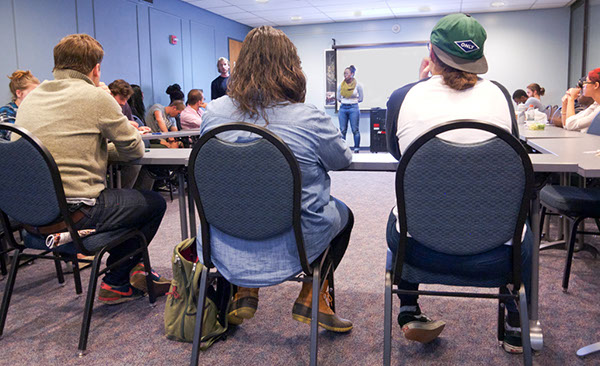

The 58th Student Senate met on Wednesday, Oct. 1 to speak on the progress made in the discussion of the senate’s response to student protesters’ recent interaction with campus police during Gov. Andrew Cuomo’s visit to SUNY New Paltz on Sept. 16.
The student senate passed a co-sponsored declaration that outlined the situation and the events that prevented students from expressing their first amendment rights, such as the short notice and a lack of information in the student handbook in reference to allotted distances for protesting.
According to the declaration, this short notice forced student protestors to gather quickly outside the SUB. They were approached by police and moved back from their position outside the atrium, to almost against the wall of the Smiley Arts Building. Police also unholstered pepper spray when some students refused to stay behind the line.
The declaration, written by the senate Constitution Rules Committee, presented three clauses: that students not be threatened with excessive force, that all officials be properly informed of their orders and that all officials show professionalism and not abuse excessive force, as defined in the declaration.
The declaration will soon be presented to administration and the University Police Department. There was debate over who should present the declaration and when.
“I don’t want it to be presented from multiple angles,” said Executive Vice President Jesse Ginsburg. “It means a lot more if it comes from one central voice.”
The senate also spoke over Skype with Catherine Sevecenko, author for the Foundation for Individuals Rights and Education (FIRE). She advised the senate to take future action that they deemed appropriate. However, without all the facts of the situation, she was unable to provide a concrete legal strategy to the senators.
She did suggest that the senators explore the Standup for Free Speech litigation project, a group that aims to eliminate unconstitutional speech codes at public universities, according to their website.
Towards the end of the call there was a general feeling of unpreparedness, as measured in a semi-formal vote. The goals of the senate are not yet clear and many senators feel they should be more concrete before contacting Sevecenko again. They plan to talk with her in the future once they have considered the next steps and observed the reactions to their declaration.
FIRE has ratings for the speech codes for public universities, green, yellow and red lights, in order of best to worst, respectively. According to Thomas Savidge, President of Young Americans for Liberty at New Paltz and the campus coordinator for the Students of Liberty, New Paltz is at a red light rating. He also said that New Paltz was awarded the “worst speech code of the month” in October 2012 by FIRE.
